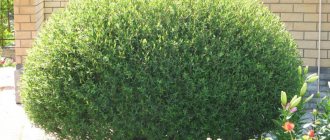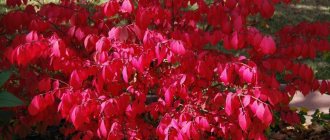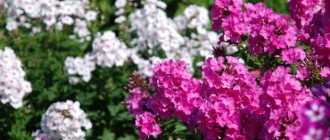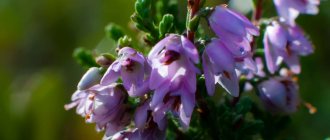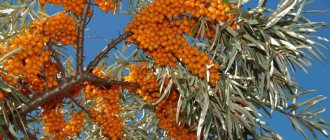Marsh marigold is a low herbaceous plant. Because of its early flowering and lush greenery, it is loved by many gardeners, although this crop has become more or less popular only recently. It is used to decorate the coastal zone of ponds and man-made reservoirs, flower beds in combination with other early flowering ornamental garden crops.
Due to its small bright yellow flowers, preference for moist swampy soils, and slight toxicity, marigold is unflatteringly called - frog grass, frog grass, swamp violet, swamp night blindness, swamp chicken blindness, bog blind, toad grass, swamp burdock.
Description of the plant
Marsh marigold (Cáltha palústris)
Marigold is a herbaceous perennial wild plant of the Buttercup family.
There are about 40 species of this species.
A characteristic feature of the marsh marigold is its height. The plant reaches up to 40 cm in height when germinating in meadows and fields, and in an aquatic environment it reaches 3 m.
The stem is fleshy, leafy, glabrous, and can be erect, ascending, creeping or ascending. The root system is shallow and fibrous. The plant is slightly poisonous. Marigold leaves are dark green, alternate, glabrous, heart-shaped with a serrated edge. On the back of the leaf there are pronounced red-blue veins. The size of the leaf blade is not the same in the root zone. Leaves are 15 - 20 cm in diameter, on long fleshy petioles. On the stem they are smaller in size and have short petioles. In the upper part of the stem near the flowers, the leaves are sessile. When exposed to bright direct sunlight for a long time, the leaves curl into a tube.
The flowers are 5 cm in diameter, predominantly yellow, but there are orange, white and golden specimens. The flowers are arranged singly or in groups on long peduncles from the axils of the leaves of the upper part of the stem. The flowering period is April-May, the first flowering is observed from 8-10 years of age of the plant.
In June - July the fruit ripens - many leaves with a small number of seeds.
The winter-hardy species tolerates the most severe frosts down to -35°C. Moisture-loving plants can also germinate in dry soil, provided they are watered abundantly.
https://youtu.be/3XKY2HAm65E
Types and varieties
Due to the rich color of the foliage, marsh marigold, even after flowering, can decorate any garden. Frog grass is actively cultivated, despite the fact that it looks like the wild species, but with brighter flowers and a longer flowering period.
Caltha leptosepala
Caltha leptosepala
The two-flowered variety grows up to 35 cm in height. The stem is smooth and straight. The leaves are green, smooth, up to 10 cm long, with a solid or slightly carved edge, on petioles 5 - 25 cm long. Thin-petaled marigold blooms with white flowers up to 2 cm in diameter with a bright yellow core. Individual petals are elongated oval in shape. Flowers bloom in 1-2 pieces. at the ends of long peduncles (up to 30 cm).
Swimming marigold (Caltha natans)
Swimming marigold (Caltha natans)
An aquatic miniature herbaceous plant with white flowers, up to 4 cm in diameter. The leaf blade is floating, round in shape with smooth edges, 3 - 4 cm in diameter. Perfect for decorating artificial ponds and reservoirs.
Membranous marigold (Caltha membranacea)
Membranous marigold (Caltha membranacea)
A densely blooming species with small bright yellow flowers. The stem is branched up to 30 cm high. The leaves are large, 10 - 15 cm in size, dark green, round or kidney-shaped, on long petioles 20 - 35 cm. At the peak of flowering, up to 20 flowers can bloom simultaneously on one plant.
Marsh marigold (Caltha palustris)
Marsh marigold (Caltha palustris)
Perennial up to 60 cm in height, with numerous fibrous, cord-like roots. Near the root system, the stem, thickened at the apex, becomes smaller and branches. The bare stem is erect or ascending. The leaves are dark green, leathery, smooth and dense, with a serrated edge, heart-shaped near the base of the stem, on long petioles. Stem sessile kidney-shaped leaves are smaller in size.
The flowers are bright yellow, up to 4-5 cm in diameter, bloom in April-May, flowering duration is no more than 20 days, the fruits ripen in July. After flowering, the herbaceous plant grows strongly, and the leaf blades acquire a darker color. The plant is slightly poisonous.
This moisture-loving plant is found throughout the European part of Russia, Siberia, the Far East, Central Asia, mainly in marshy meadows, forests, along reservoirs, along the banks of rivers and lakes.
Two-flowered marigold (Caltha biflora)
Two-flowered marigold (Caltha biflora)
Homeland - wet meadows and fields of North America. Compact bush about 8 - 10 cm in height. Green smooth heart-shaped leaves up to 7 cm in diameter. White flowers up to 2 cm in diameter, grow on long peduncles, towering above the plant. Flowering begins in May. The plant prefers light areas on moist soils.
Forest marigold (Caltha sylvestris)
Forest marigold (Caltha sylvestris)
A perennial with an erect stem, grows up to one and a half meters. The leaves are kidney-shaped or rounded, up to 15 cm in diameter.
Forest marigold blooms with white flowers up to 3 cm in diameter, collected in groups of 5 to 15 pieces. Flowering period April-May.
Prefers sunny or semi-shaded areas with moist soil. It is most often found in the Far East, Korea, and China.
Marigold (Caltha fistulosa)
Marigold (Caltha fistulosa)
The tallest herbaceous plant of all representatives of the marigold genus. During the flowering period, the plant does not exceed 15 - 30 cm in height. Afterwards, it stretches greatly and by the time the seed capsule ripens, it reaches 80 - 120 centimeters.
The stem and branches are thick and hollow. The leaves are dark green, leathery, large, on long petioles. By July, the foliage grows greatly, with the leaf blades increasing to 10 - 15 cm. The flowering period is May-June, the peak of flowering occurs at the end of May - beginning of June. The flowers are loose, rich yellow, up to 5 - 7 cm in diameter, abundantly covering the bush. Prefers moist soil and shady areas of the garden.
White marigold (Caltha palustris var alba)
White marigold (Caltha palustris var alba)
A low, compact perennial herbaceous plant 15 - 20 cm in height. Requires at least 10 cm of area around itself. The green, smooth, shiny leaves are heart-shaped and rounded with a crenate edge. Small single white flowers with separate elongated petals and a yellow center.
Double marsh marigold (Caltha palustris plena)
Double marsh marigold (Caltha palustris plena)
The compact spherical bush reaches 30 cm in height and 30 - 45 cm in width. Multi-petaled double flowers of bright yellow color. Terry marigold begins to bloom in May. The leaves are heart-shaped - round, dark green. Prefers shade and partial shade with moist soil.
Lush marsh marigold (Caltha palustris subsp laeta)
Lush marsh marigold (Caltha palustris subsp laeta)
A perennial, with an ascending or ascending bare, weakly branched stem, it grows up to one and a half meters in height. At the base of the stem the leaves are larger, deeply heart-shaped, as if enveloping the stem. The remaining leaves, 3–8 cm in size, are kidney-shaped or heart-shaped, crenate.
After flowering, the foliage grows, the leaf blade reaches 30 centimeters. The flowers are bright yellow, loose, bloom from May to October.
Marigold (Caltha polypetala)
Marigold (Caltha polypetala)
The variety's homeland is the wetlands of the Caucasus and Asia mountains. Due to its vigorous growth, the perennial acquires a spherical shape up to 15 - 30 cm in height and width. The leaves are dark green, the flowers are yellow-golden, up to 6-8 cm in diameter, the flowering period is May - June.
Marsh marigold (Caltha palustris ssp procumbens)
Marsh marigold (Caltha palustris ssp procumbens)
The stem is creeping or ascending, glabrous, weakly leafy, with large green heart-shaped leaves. The flowers are yellow solitary, up to 5 - 8 cm in diameter.
2.When it blooms
When grown in open ground, the flowering period for different species may occur at different times, but generally flowering occurs in April - May. In addition, the specific time of flowering will also be influenced by the climate in the region and weather conditions. Most marigolds are classified as primroses and bloom their buds on warm spring days, immediately after the snow cover melts. If the weather remains warm and fine in the fall for a long time, re-blooming may occur, but it will be less abundant.
↑ Up,
Plant care
Marigold is an extremely unpretentious plant. Frost-resistant, does not need additional shelter for the winter. When planting marigold in dry soil, it is necessary to provide additional watering.
It grows equally well both in open areas and in the shade, but brighter and more active flowering is observed in sunny areas. A very moisture-loving plant, with a decrease in watering, marigold begins to bloom less often. The bush grows in 3 - 4 years; to maintain its decorative appearance, it is necessary to plant the plants by dividing the bush.
Marigold poisoning
When planting a crop, be sure to familiarize yourself with the symptoms of poisoning by toxic substances contained in this plant. The following reaction is possible from the body:
- increasing or dull headache;
- loss of orientation, dizziness;
- ringing or squeaking in the ears;
- negative symptoms from the digestive tract - diarrhea, intestinal pain, bloating, flatulence;
- negative symptoms from the urinary system - frequent urination, protein flakes in the urine, a significant change in its color.
The sap of the plant can cause skin reactions, including abscesses and burns.
If there are any signs of poisoning, you should call a doctor. If possible, rinse your stomach and take a laxative before his arrival. Rinse the affected area on the skin with clean water and treat with any antiseptic (for example, streptocide).
Planting, growing and propagation
To grow marsh marigold, no special conditions are needed; it is enough to provide the plant with good watering and not expose it to strong sunlight. In this case, the marigold will delight you with beautiful early flowers and abundant green foliage. The planting of marigold should be planned so that it is not overlapped by other garden crops.
Reproduction
Marigold is a herbaceous plant for open ground, propagated by seed and vegetative methods (cuttings, dividing the bush).
The bush is divided in early spring before flowering or in early autumn after flowering, but before frost begins. The bush is dug up, divided into parts, and planted at a distance of 30 - 40 cm from each other. After transplantation, new bushes are watered and shaded until they take root in a new place. Marigold tolerates transplantation well.
Reproduction of garden marigold varieties by seeds occurs in spring and autumn. Seeds must be subjected to stratification: the seeds are kept at a temperature of 10°C for 30 days, then for 60 days at 18 - 20°C. Plants obtained from seed bloom in 2 - 3 years.
Propagation by cuttings is a faster way to get new marigold bushes. To do this, the stem along with the leaf bud is pressed to the ground and fixed. If the soil is sufficiently moistened, the stem will quickly take root and can be separated from the mother plant.
Plant root stimulants
The necessary preparations to accelerate root formation can be purchased at special gardening stores. When choosing, special attention must be paid to the composition, expiration date, method of use, storage conditions and precautions. In any case, purchased products are half made of chemicals. A more environmentally friendly and less expensive product can be prepared independently at home.
The stimulant, prepared from willow twigs, is a product with “growth hormones” that are present in abundance in willow cells. To prepare the stimulant, you need to cut 4 - 6 willow twigs into pieces 3 - 5 cm long, pour them into a saucepan, pour cold water.
The smaller the pieces, the more beneficial substances the stimulant will contain. Place the pan on low heat and cook for 20 - 40 minutes. After this, remove the pan from the heat, wrap it in a towel and leave for 10 - 12 hours. The resulting decoction is poured into prepared containers, through cotton wool, a fine sieve or gauze, and stored in a cool room for no more than 30 days.
The resulting undiluted infusion is used to water transplanted plants, young seedlings, and seeds before sowing.
Other stimulants are also used to improve root formation of cuttings: honey dissolved in water, cut potato tuber, aloe juice, yeast.
Properties of marsh marigold
It contains saponin, which can help in the treatment of bronchitis; it dilutes and removes phlegm from the bronchi. Its effect on preventing the proliferation of cancer cells is known, which reduces the risk of cancer.
With the help of flavonoids contained in marigold, you can strengthen the walls of capillaries, stabilize blood pressure and heart rate. It also has anti-inflammatory and analgesic effects. There is information about taking marigold for various diseases of the circulatory system.
Edible marigold - true or false
There are even culinary recipes for preparing marigold. Marinades for meat and fish are often prepared from marigold buds. The leaves can be safely added to soups to add flavor to them. To increase your appetite, you can add a small piece of marigold to any dish. A favorite recipe for housewives who have the ability to cook from marigold is a simple recipe for marigold in Korean.
Before cooking, you first need to boil it for three minutes and soak it in water for about a day, be sure to change the water periodically. Then add fried onions, sugar, a little soy sauce, two cloves of garlic and spices to taste. Then you can add any ingredients to the mixture - greens, sesame or flax seeds, nuts.
You can make “German capers” from marigolds. To do this, the collected buds need to be marinated in vinegar mixed with water, salt, pepper and various spices.
Currently reading:
- Choosing cucumbers for open ground according to your preferences
- Popular varieties of Asian mandarin for indoor care
- The gardener's challenge is to grow and make Crinum bloom
- Seven types of pears for planting, caring for and growing fruits
Share the news on social networks
About the author: Victoria Semyonovna Nakhodkina
Leading researcher at the laboratory of vegetable and berry crops, Yakut Scientific Research Institute of Agriculture, Siberian Branch of the Russian Academy of Agricultural Sciences, Republic of Sakha (Yakutia).
Application in medicine
In folk medicine, marigold is used to treat various ailments.
Chemical composition
All parts of the plant are well studied. Alkaloids, saponins, and toxic Y-lactones (protoanemonin, anemonin) were found in marigold. All parts of the plant contain triterpenoids, steroids, carotenoids, coumarins, and alkaloids. The root system includes helleborin compounds, the inflorescences contain flavonoids and quercetin.
Useful properties of marigold
Thanks to the active ingredients in folk medicine, marigold preparations are used as an anti-inflammatory, analgesic, diuretic, wound-healing, antifever, antitumor, restorative, expectorant, and anticonvulsant.
Applications of marsh marigold
Despite its poisonous qualities, the plant is actively used in alternative medicine and homeopathy.
A decoction and infusion of marigold leaves is taken for metabolic disorders, fever, anemia, cough, bronchitis, asthma, diseases of the genitourinary system, colds, jaundice and diathesis.
An infusion of herb flowers is used for ascites. Baths with the addition of herbal decoction are taken to treat rheumatism and colds. To speed up the healing of small wounds, ulcers and burns, apply fresh marigold leaves, pre-treated with boiling water.
How does marigold poisoning manifest?
The body's reaction to marigold poisoning is headache, dizziness, ringing and noise in the ears, malfunction of the digestive tract (bloating, diarrhea, colic), disruption of the normal functioning of the kidneys (frequent urination, the appearance of protein in the urine, change in urine color).
If marigold juice gets on the skin of the body or mucous membrane, burns, burning, abscesses, and allergic reactions occur.
First aid for poisoning is gastric lavage and taking a laxative. In case of burns, the affected area of the skin is thoroughly washed with warm water and treated with an antiseptic. To reduce the allergic reaction, take an antihistamine.
Contraindications
It is extremely dangerous to use any green parts of a cut plant raw during the flowering period, since they are slightly poisonous. However, after heat treatment, the poisonous properties of the plant disappear.
Collection and storage
All parts of the plant are used in alternative medicine. The above-ground part of the plant is collected during the period of active flowering. Flowers and leaves are dried, laid out on a flat surface in a well-ventilated closed or darkened room, turning over periodically, or dried in an oven at 50 - 60 ° C.
The root system is removed after the flowering period, closer to autumn, washed well from the soil, cut into pieces, withered and dried in the oven.
The prepared grass is transferred to linen bags or birch bark boxes. Shelf life is no more than two years.
Chemical composition
The chemical composition of the plant has not been studied in detail.
Plants contain alkaloids (ranulunculin, anemonin, berberine, isorhamnetin, protoanemonin), bitterness, tannins, glycosides, saponins, flavonoids, choline, lactones, vitamin C, carotene, starch, sugar. Protoanemonin can be found in the plant if it is fresh. During flowering, the leaves contain vitamin C and carotene.
Rhizomes and roots contain hederagin and oleonolic acid glycosides, triterpene saponins, and alkaloids. Alkaloids, fatty oil and vitamin C were found in the seeds.
The stems and leaves of frog grass are poisonous before flowering and fruiting. After marinating and boiling, they can be consumed.
Application in landscape design
Marigold is well suited for decorating coastlines near artificial reservoirs, as well as decorating parks on wet soils. It develops equally well both in open areas and in partial shade. When decorating man-made ponds and reservoirs, marigold will perfectly decorate the surface of the water. Decorative marigold must be planted so that at the time of flowering it is not blocked by other plants, and after flowering the lush greenery favorably emphasizes the bright flowers of plants in neighboring garden plantings.
Marigold flowers and its large leaves go well with alpine forget-me-not, lungwort, knotweed, astilbe, bergenia, and ostrich.
Photo material
Marsh marigold, which is grown in gardens and household plots, comes in two types: “lush” and “terry”. Even in the photo, its magnificent flowers attract attention and arouse interest, but in life this beauty looks much better!



